
Generative Design: What is it?

Table of contents
- What is Generative Design?
- How Does Generative Design Work?
- Generative Design Benefits
- Industry Applications
- Popular Generative Design Software and Tools
- Trends in Generative Design Development
- Steps to create Generative Design Software
- Monetization Models of Generative Design Software
- How Much Does It Cost to Develop Generative Design Software?
- How to Create Successful Software for Generative Design?
- Challenges and Limitations of Generative Design
- Cost estimation at Magora and Case Studies
- FAQ
- Final Words
According to a recent survey by Deloitte, 80% of companies that have implemented generative design have reported a reduction in development time and costs. This highlights the growing importance of generative design as a powerful tool for designers and engineers in a variety of industries. Generative design enables users to explore and evaluate many design options quickly and efficiently, leading to improved performance, reduced costs, and increased sustainability. In this article, we will provide an overview of generative design, including its benefits, limitations, popular software tools, and the challenges of creating successful generative design software. We will also examine the potential for generative design to evolve and become even more powerful and accessible in the coming years.
What is Generative Design?
Generative design is a process that uses algorithms and parameters to generate iterative design solutions. It is a powerful tool that is becoming increasingly popular in various industries due to its ability to produce faster design iterations, cost-cutting, and enhanced product performance. Generative design has its roots in the field of computational design, which emerged in the 1960s. Early pioneers in the field, such as Ivan Sutherland and William Newman, developed early computer-aided design (CAD) systems that allowed for the creation of digital models. As computer processing power increased, the field of generative design evolved, with early examples including the 1993 NASA design of a lightweight engine bracket using optimization algorithms.
How Does Generative Design Work?
Generative design uses algorithms and parameters to automatically build and analyze multiple design options. Here's a step-by-step breakdown of the generative design process:
1. Defining the Design Space
The first step in generative design is to define the design space, which includes all the variables and parameters that can be manipulated to create a design. This might include parameters such as dimensions, materials, load conditions, and manufacturing constraints.
2. Setting Design Goals
Once the design space is defined, the designer will need to set specific design goals, such as minimizing weight, maximizing strength, or reducing manufacturing costs. These goals will guide the algorithm in generating and evaluating designs.
3. Creating Algorithms
Next, the designer creates algorithms that will automatically generate and evaluate design options based on the defined design space and design goals. These algorithms may use machine learning or other advanced techniques to generate and evaluate designs.
4. Generating Designs
With the algorithms in place, the generative design process can begin. The designer inputs the parameters and goals, and the algorithm generates hundreds or even thousands of potential design options.
5. Evaluating Designs
The generated designs are evaluated based on a range of criteria, such as performance, manufacturing feasibility, and cost. The algorithm then ranks the designs based on their fitness to the design goals.
6. Iterating Designs
With the best design options identified, the designer can then modify the design space and input new parameters to generate another set of design options. The process of generating and evaluating designs can be repeated multiple times until the optimal design is found.
Overall, the role of algorithms and parameters is essential in the generative design process. By using algorithms to generate and evaluate designs, and setting specific parameters and design goals, designers can quickly explore multiple design options and identify the most optimal design.

Generative Design Benefits
Generative design is an effective instrument that has the potential to revolutionize the design process across a wide range of industries. Here are some of its strong points:
Improved Design Optimization
Generative design allows designers to input design parameters and constraints and then produces hundreds or thousands of optimized design options. These options can then be ranged based on a number of criteria, including cost, weight, strength, and more. This enables designers to quickly identify the best design options, leading to more efficiency and optimization .
Faster Design Iteration
With generative design, designers can rapidly explore and assess multiple design options in a fraction of the time it would take to manually create them. This means that designers can iterate through designs more quickly, ultimately leading to faster time-to-market and greater innovation.
Reduced Material Waste
Generative design can help reduce material waste by optimizing designs to use less material while still meeting the required performance criteria. By minimizing material usage, designers can reduce manufacturing costs and minimize the environmental impact of production.
Increased Product Performance
By using algorithms and advanced simulations, generative design can streamline product performance. This leads to projects that are more efficient, durable, and reliable. As a result, companies can gain a competitive advantage in the marketplace.
Exploration of New Design Possibilities
Generative design enables designers to explore design options that would be difficult or impossible to achieve through traditional design methods. By allowing the computer to develop designs, designers can push the boundaries of what is possible, leading to more innovative and creative designs.
Better Collaboration and Communication
Generative design can improve collaboration and communication among team members. By using a common software platform, designers, engineers, and other stakeholders can more easily share design ideas, sort through designs, and provide feedback. This can lead to more cohesive design teams and ultimately better products.
Industry Applications
Generative design is used in a wide range of industries, including automotive, aerospace, and architecture. In the automotive industry, generative design helps optimize engine components, reduce vehicle weight, and improve fuel efficiency. In aerospace—create more efficient aircraft parts, reduce fuel consumption and improve performance. In architecture, generative design creates complex facade designs and optimizes building performance.
Automotive Industry Case Studies
One of the most notable examples of generative design in the automotive industry is the use of generative design by General Motors (GM) to redesign a seat bracket. The new design reduced the weight of the bracket by 40%, while maintaining the same performance standards. This resulted in significant cost savings for GM, while also reducing the environmental impact of their production processes.
Aerospace Industry Case Studies
In the aerospace industry, generative design is used to create lighter and more efficient aircraft parts. Airbus, for example, used generative design to create a partition wall for the A320 aircraft that was 45% lighter than previous ones. The new variant also improved noise reduction and thermal insulation, providing a more comfortable experience for passengers.
Architecture Industry Case Studies
Generative design is also used in architecture to create complex facade designs and maximize building performance. Zaha Hadid Architects, for example, used generative design to create a striking facade for the Opus Tower in Dubai. The design features a complex pattern of irregular hexagonal shapes, which were optimized using generative design algorithms to minimize solar heat gain and maximize natural light.
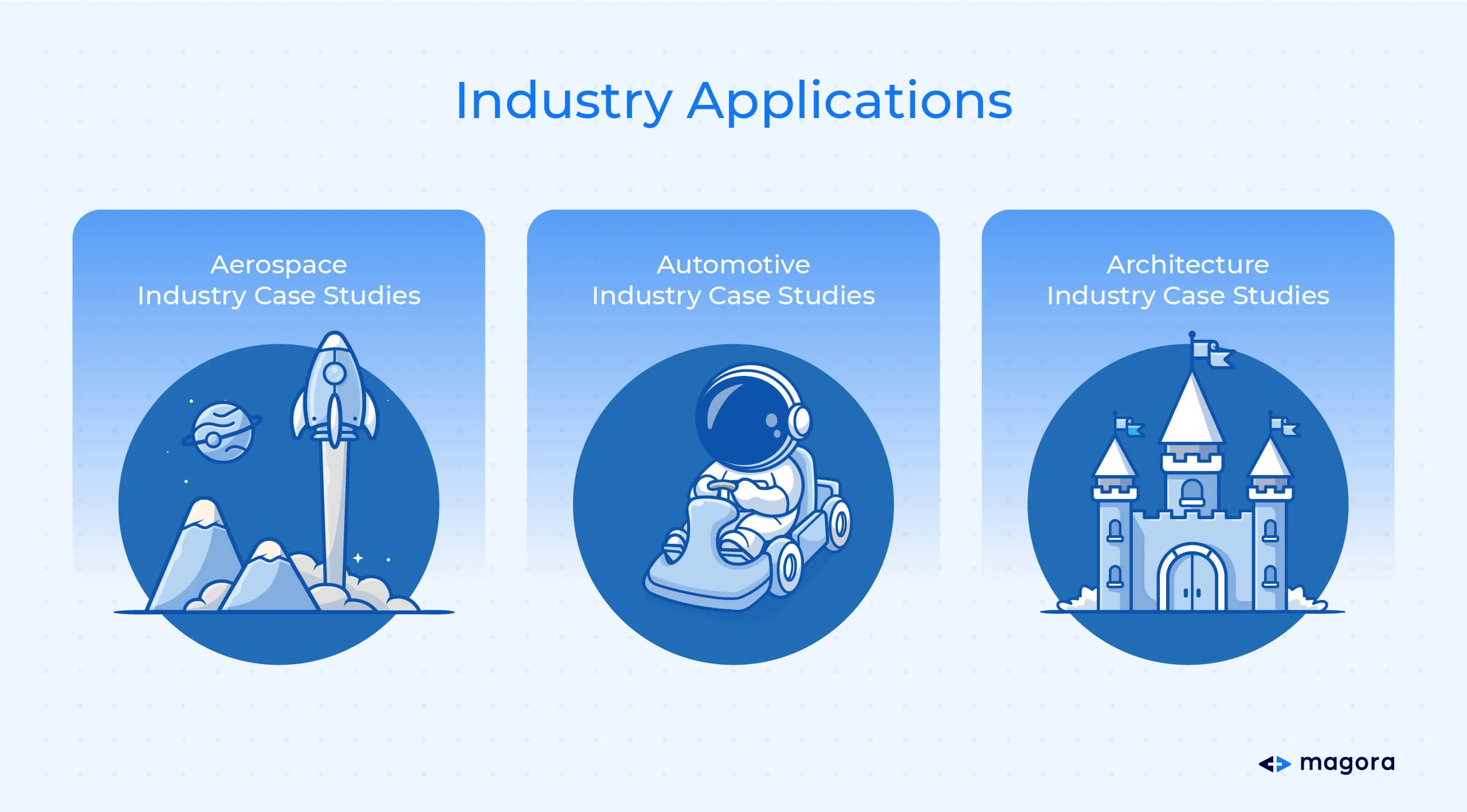
Popular Generative Design Software and Tools
Generative design is a rapidly developing field, and there are many software and tools available to support the generative design process. Here is an overview of some of the most popular software and tools used in generative design:
Autodesk Generative Design
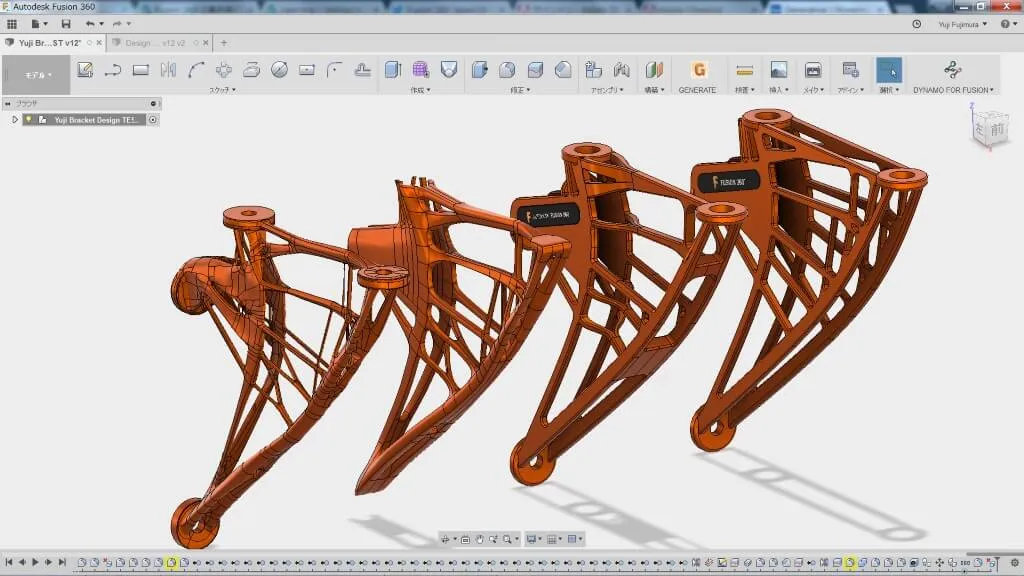
Autodesk Generative Design is a cloud-based tool that works by using advanced algorithms to create designs based on input parameters and constraints. It integrates with other Autodesk tools, such as Fusion 360 and AutoCAD, to support the entire design process.
nTopology
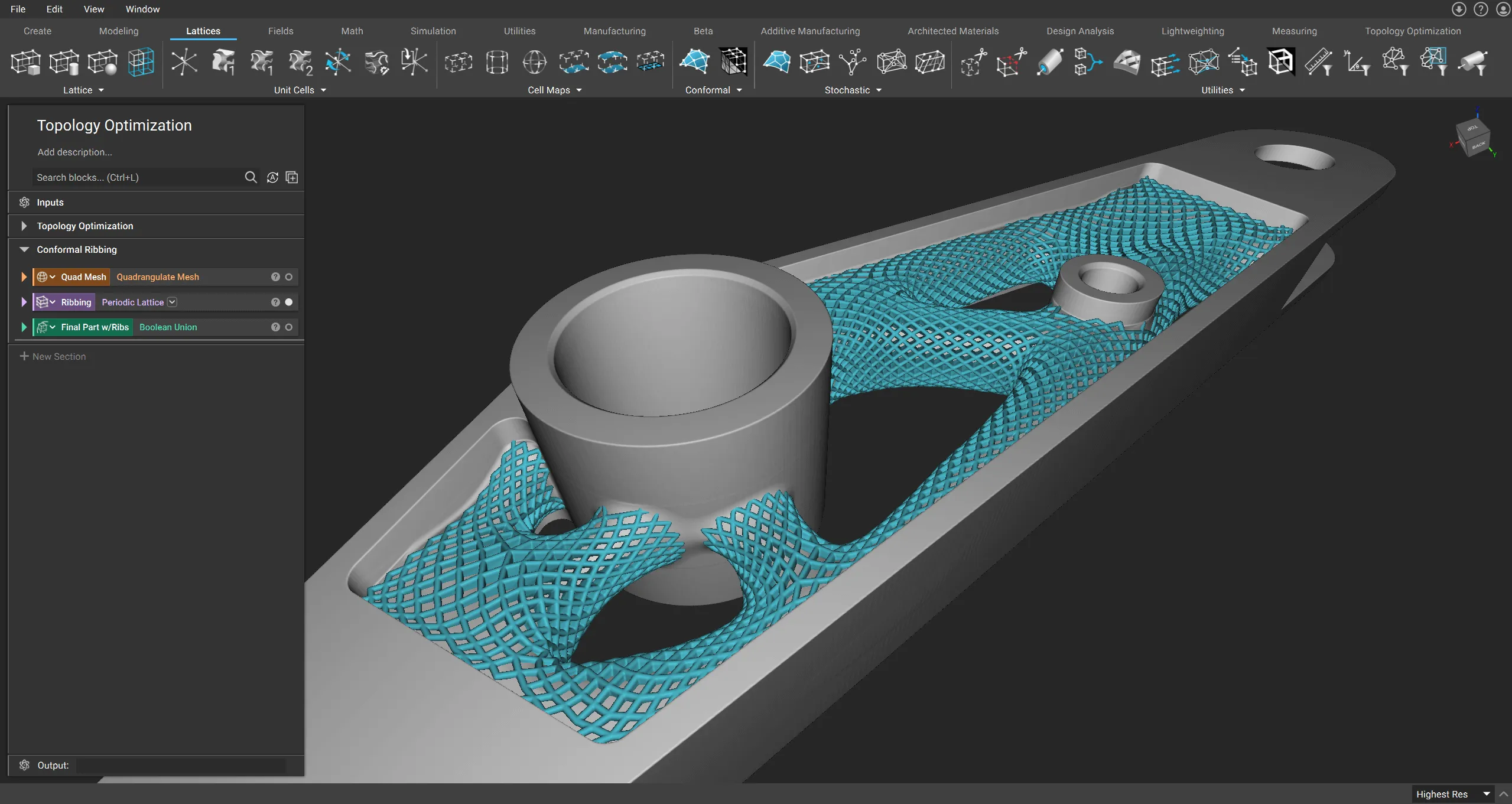
nTopology is a powerful generative design software based on advanced geometry processing algorithms that creates complex designs. It allows designers to set necessary goals and constraints and then get best designs that can be exported to other CAD software for further refinement.
ANSYS Discovery Live
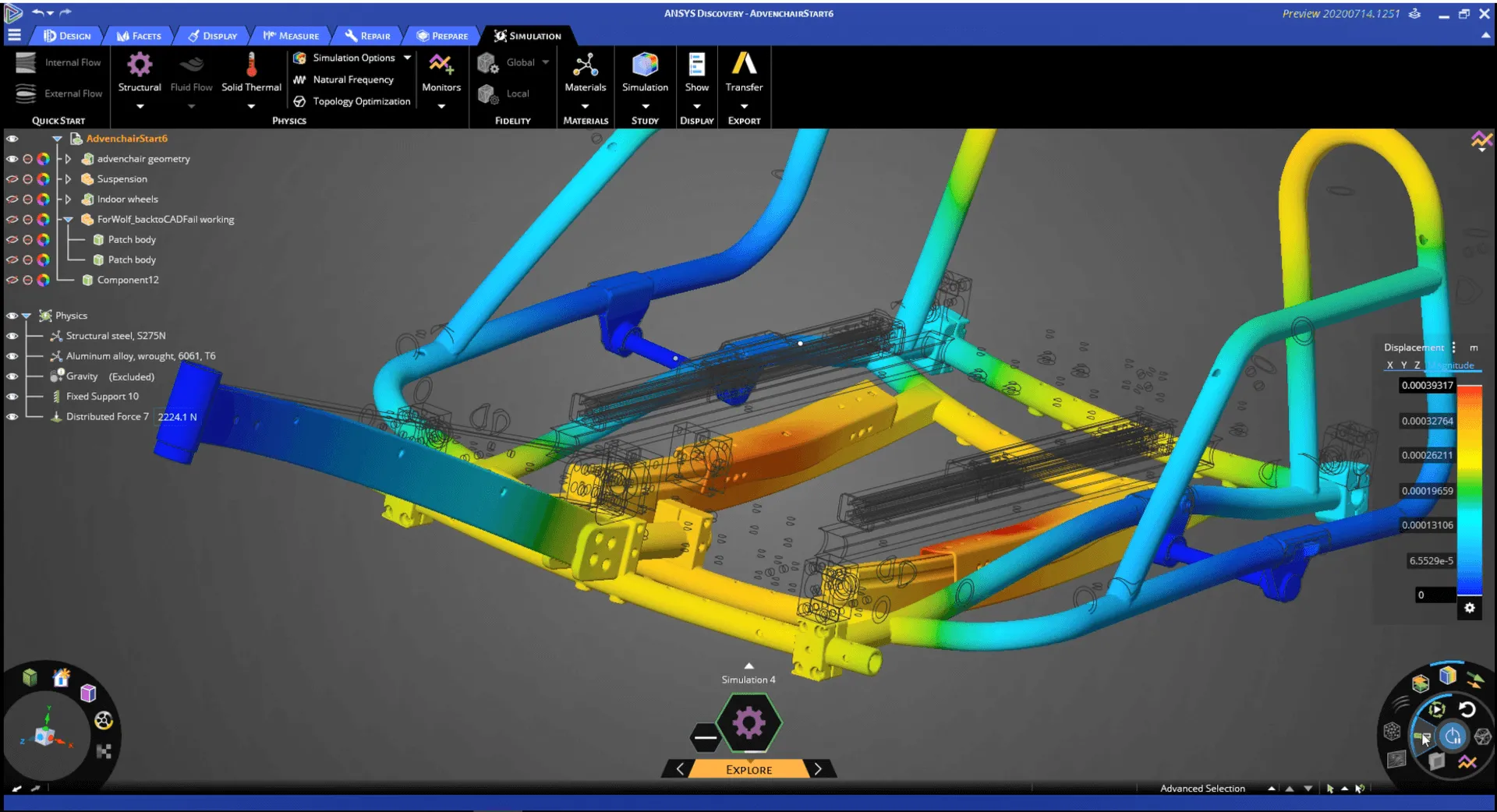
ANSYS Discovery Live is a simulation software that supports real-time, interactive generative design. It uses physics-based simulations to build and evaluate multiple prototype options in real-time, allowing designers to quickly explore and change their designs.
Siemens NX
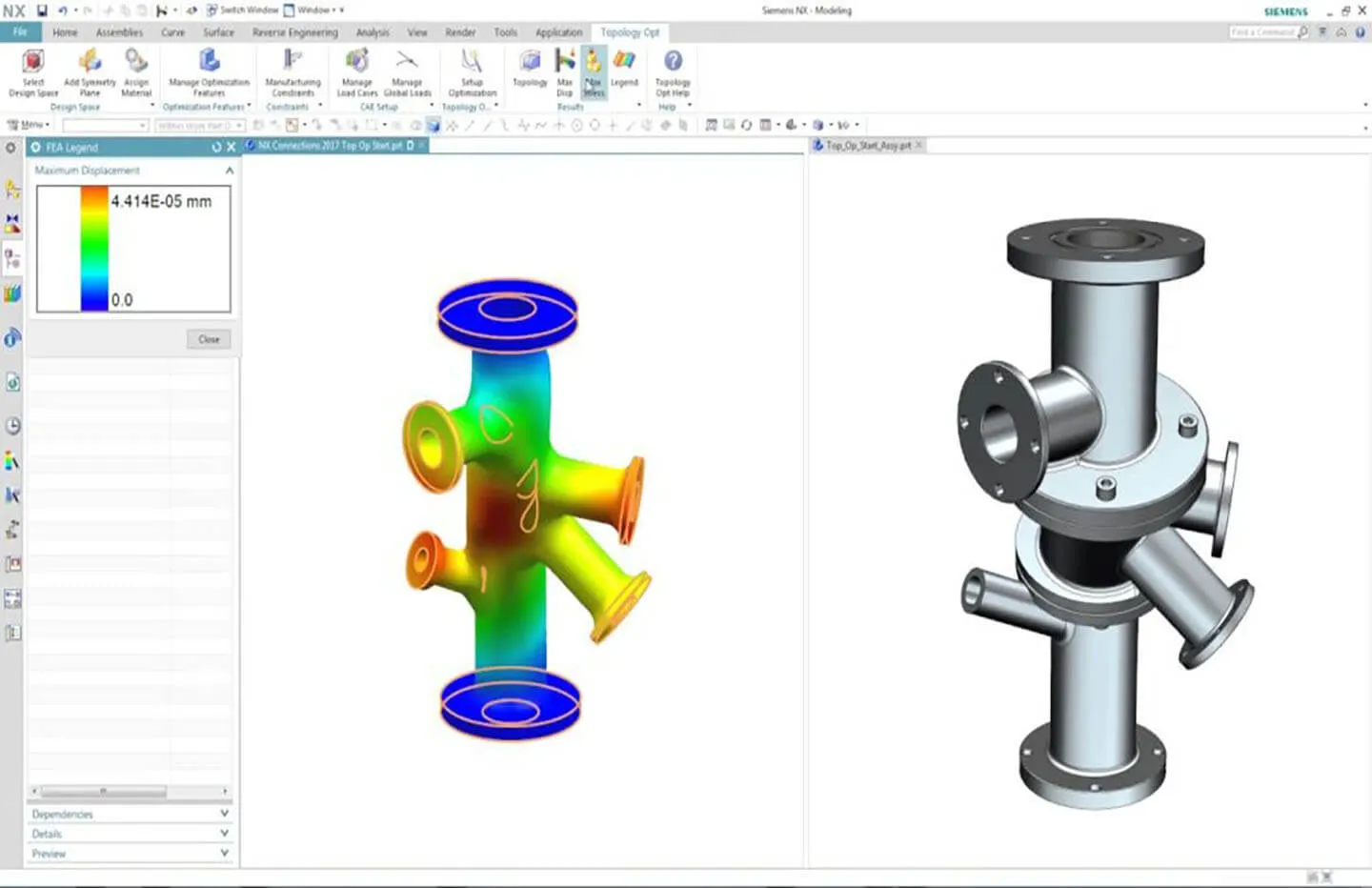
Siemens NX is a CAD software that includes generative design capabilities. It supports advanced topology optimization, which enables designers to create lightweight, high-strength constructions with minimal material usage.
SolidWorks

SolidWorks is a popular CAD software that has a variety of generative design tools. It provides topology optimization and other advanced simulation capabilities that help designers to develop more efficient and productive designs.
Granta Design
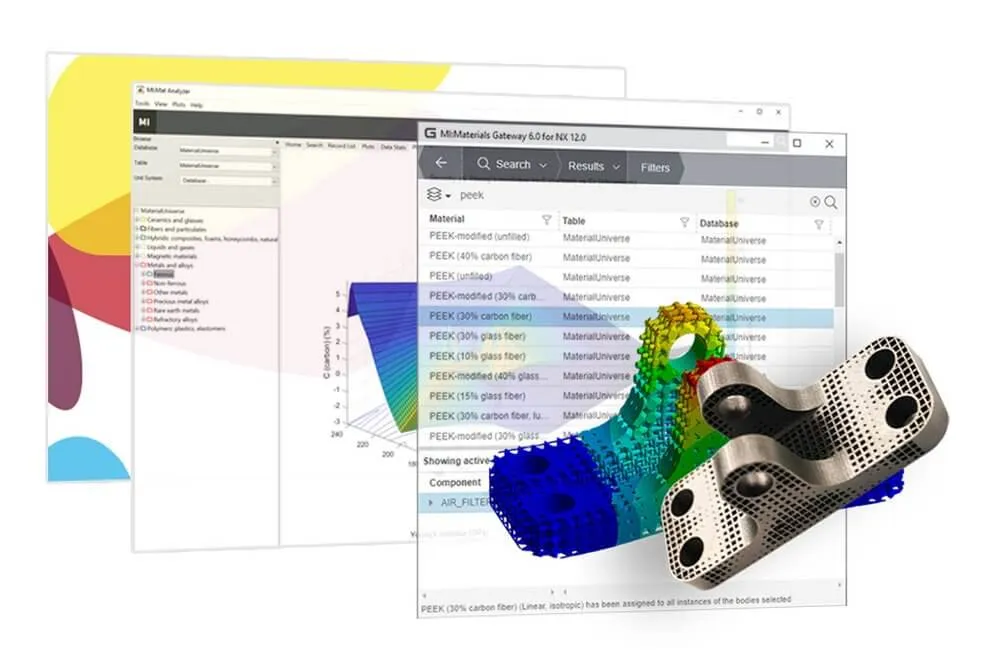
Granta Design is a materials information management software. It provides designers with access to a wide diversity of materials data. That is why, designers are able to make informed decisions about material selection and optimization during the working process.
Trends in Generative Design Development
Generative design is a fast-paced technology, and there are many ways in which it is likely to thrive in the coming years. Here is a list of insights into the directions that generative design can evolve:
Increased Integration with AI and Machine Learning
As Artificial Intelligence and machine learning continue to advance, they are likely to play an increasingly important role in generative design. AI and ML algorithms can help to identify patterns and streamline designs in ways that are not possible with human intuition alone. This can lead to better results in less time.
Expansion of Design Space
As computational power continues to increase, generative design algorithms will be able to handle larger and more complex design spaces. This means that designers will be able to explore more design options and identify more optimal solutions.
Greater Focus on Sustainability
As the importance of sustainability continues to grow, generative design is likely to play an increasingly important role in helping to create more sustainable products. Generative design software can help to minimize material usage, reduce waste, and improve the overall productivity of products.
Integration with Additive Manufacturing
Generative design is already being used to optimize designs for additive manufacturing, and this trend will probably continue in the next few years. As additive manufacturing continues to advance, generative design algorithms will be able process designs in even more precise ways, further reducing material waste and boosting product performance.
Increased Adoption Across Industries
As generative design continues to prove its value in many industries, it is likely to be adopted by more companies and industries. This will result in increased innovation and competition as well as new and improved products.
Steps to Create Generative Design Software
Creating software for generative design can be a complex process, requiring expertise in several areas, including computer science, mathematics, and engineering. Here are some general steps to consider when creating software for generative design purposes:
Determine the requirements
Start by defining the requirements of your generative design software. What problem does it aim to solve, and what features does it need to have? Some potential features could include the ability to set parameters and goals for a design, create multiple potential solutions using algorithms, and assess designs based on performance metrics.
Choose a development platform
Consider which development platform you'll use to build your generative design software. Some options include using a 3D modeling software such as Rhino, SketchUp, or AutoCAD, or using a specialized software development platform such as MATLAB or ANSYS.
Develop the algorithms
The heart of generative design software is the algorithms used to generate designs based on input parameters and goals. These algorithms can be complex and may require knowledge of fields such as artificial intelligence and machine learning.
Test and refine
Once you have developed your software, it's important to test it thoroughly to ensure that it is functioning correctly and generating optimized designs. You may need to refine your algorithms and software based on feedback from users and performance testing.
Publish and distribute
Once you have completed the development and testing phases, it's time to publish and distribute your software. Consider which platforms you'll use to distribute your software, such as GitHub, the Apple App Store, or Google Play Store.
Creating software for generative design purposes is a challenging but rewarding process. By following these steps and consulting with Magora experts, you can create software that helps to accelerate the design process and improve product performance.
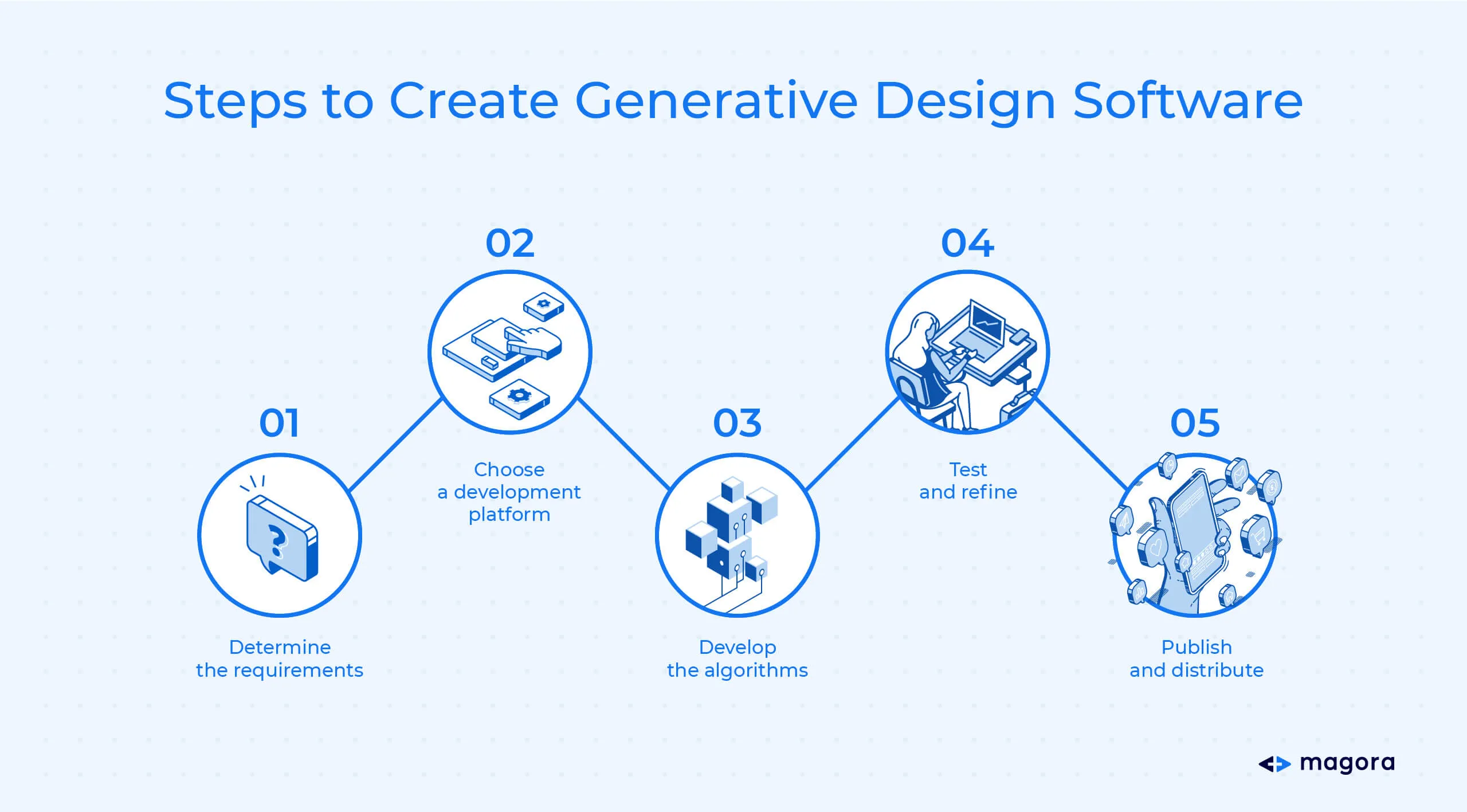
Monetization Models of Generative Design Software
There are several ways to generate income from generative design software:
License Fees
One way to generate income is by charging license fees to users who want to use the software. This can be a one-time fee or a recurring fee based on usage.
Subscription-based Model
Another option is to offer a subscription-based model where users pay a monthly or annual fee to access the software.
Custom Development
Some companies may be willing to pay for customized versions of the software that are tailored to their specific needs.
Integration with Other Products
By integrating the software with other products or services, companies can offer a comprehensive solution to their customers and generate income from both the software and the integrated products.
Consulting and Support Services
Offering consulting and support services can provide an additional source of income. This can include training, customization, and technical support.
Commission-Based Model
Companies can also earn income by taking a commission on sales generated through the software, such as product sales or manufacturing services.
It's important to consider the pricing model that best fits the target market and the specific needs of customers. Additionally, marketing and promotion efforts are necessary to attract potential customers and build brand awareness for the software. By providing valuable features and benefits, delivering excellent support, and listening to customer feedback, companies can build a loyal customer base and generate a sustainable income from their generative design software.
How Much Does It Cost to Develop Generative Design Software?
The cost of creating software for generative design can vary widely depending on the complexity and functionality of the software. Here are some factors that can impact the cost of creating generative design software:
Development Team
The size and expertise of the development team will play a major role in determining the cost of developing generative design software. The more experienced and specialized the team is, the higher the cost is likely to be.
Technology Stack
The cost of developing generative design software will depend on the technology stack used for the software. The cost can vary depending on whether open-source or proprietary technology is used.
Development Time
The development time required to create generative design software will impact the cost. More complex and sophisticated software will take longer to develop and test, which will increase the cost.
Features and Functionality
The cost of creating generative design software will depend on the features and functionality included in the software. More complex and sophisticated features will increase the cost.
Integration
The cost of integrating the software with other tools and platforms will also affect the cost of development.
Maintenance and Support
Maintenance and support costs should also be taken into consideration when estimating the cost of creating generative design software.
Based on these factors, the cost of creating generative design software can range from tens of thousands of dollars to millions of dollars. The cost will depend on the specific needs of the project and the level of sophistication required for the software. It's important to work with a skilled development team and carefully evaluate the requirements of the project to accurately estimate the cost of development.
How to Create Successful Software for Generative Design?
Creating successful software for generative design requires a combination of technical expertise, user experience design, and an understanding of the needs and workflows of designers and engineers. Here are some key considerations when creating software for generative design:
Clear and Intuitive User Interface
The user interface should be easy to use and understand, with clear navigation and labels. This is particularly important as generative design algorithms can be complex, and users need to be able to understand how to input data and interpret the results.
Scalability and Performance
The software should be created to handle large amounts of data and computational complexity. This means that it should be able to process various sizes of design spaces, different types of algorithms, and run efficiently on any hardware configurations.
Flexibility
The software should be able to support a wide range of use cases and be flexible enough to accommodate different design requirements and constraints.
Automation
Generative design software should automate as much of the design process as possible, freeing designers and engineers to focus on other tasks. This can include automating repetitive tasks, data input, and optimization.
Integration
The software should integrate seamlessly with other design tools and platforms, allowing designers and engineers to easily move data and designs between different systems.
Documentation and Support
Documentation and support are critical for ensuring that designers and engineers can use the software effectively. This can include tutorials, user manuals, and online support forums.
User Feedback
It's important to gather feedback from users and incorporate it into future versions of the software. This can help to identify areas for improvement and ensure that the software is meeting the needs of users.

Challenges and Limitations of Generative Design
While generative design offers many benefits, it also presents several challenges and limitations. Some of them are outlined below:
Computational Power
Generative design software requires significant computational power to process the large amounts of data involved in the design process. This can be a challenge for some companies, particularly smaller ones with limited resources.
Complexity
Generative design algorithms can be very complex, and understanding how they work can be difficult. This can make it challenging for designers to use the tools properly and may require specialized training.
Data Quality
Generative design algorithms rely on accurate and comprehensive data to generate effective designs. If the data is incomplete or inaccurate, the generated designs may not be optimal or may not meet the requirements.
Cost
Some of the software and hardware required for generative design can be expensive, and this may be a barrier to adoption for some companies.
Legal and Ethical Issues
As generative design software becomes more widespread, there may be legal and ethical issues related to intellectual property, ownership of generated designs, and liability for errors in the generated designs.
Human Creativity
While generative design can produce highly optimized projects, it may lack the human creativity and intuition that can lead to truly innovative ideas. This means that human input and creativity are still important for creating unique and groundbreaking designs.
Cost estimation at Magora and Case Studies
At Magora, we welcome our clients’ initiatives to move with the times and grow the business by implementing new advanced technologies that bring advantages and unlock new opportunities. With a great professional team and years of experience behind us, we are full of enthusiasm to assist and consult you throughout the entire process of generative design software development and beyond. When carefully planning each step, Magora is ready to predict and prevent a tiny error. Ultimately, our satisfied clients are the proof of our high-quality products.
FAQ
What is generative design?
Generative design is an iterative design process that uses algorithms and machine learning to generate a large number of design options. By defining design parameters and objectives, the software creates designs that meet the criteria, enabling designers and engineers to quickly explore and evaluate many design options.
How is generative design used in industry?
Generative design is used in a variety of industries, including aerospace, automotive, architecture, and consumer products. It is used to design components, products, and structures that meet specific performance requirements while minimizing material usage and production costs.
How much does it cost to create generative design software?
The cost of creating generative design software can vary widely depending on the complexity and functionality of the software. Factors that impact the cost include the development team, technology stack, development time, features and functionality, integration, and maintenance and support.
How can companies generate income from generative design software?
Companies can generate income from generative design software through license fees, subscription-based models, custom development, integration with other products, consulting and support services, and commission-based models. The pricing model should be tailored to the target market and the specific needs of customers.
How is generative design likely to evolve in the future?
Generative design is likely to continue evolving as technology advances. It may become more integrated with artificial intelligence and machine learning, enabling the software to generate even more complex and sophisticated designs. It may also become more accessible and affordable, allowing smaller companies and individual designers to take advantage of its benefits.
Final Words
In conclusion, generative design has emerged as a powerful instrument for designers and engineers in a variety of industries. By using algorithms and machine learning, generative design enables users to explore many design options quickly and efficiently, leading to improved performance, reduced costs, and increased sustainability. While there are some limitations to generative design, such as the need for input data and design parameters, the benefits are significant. As technology continues to advance, generative design is likely to become even more promising and accessible, enabling more designers and engineers to take advantage of its benefits. With the right approach, companies can successfully create and market generative design software, generating income while providing valuable solutions for their customers.





